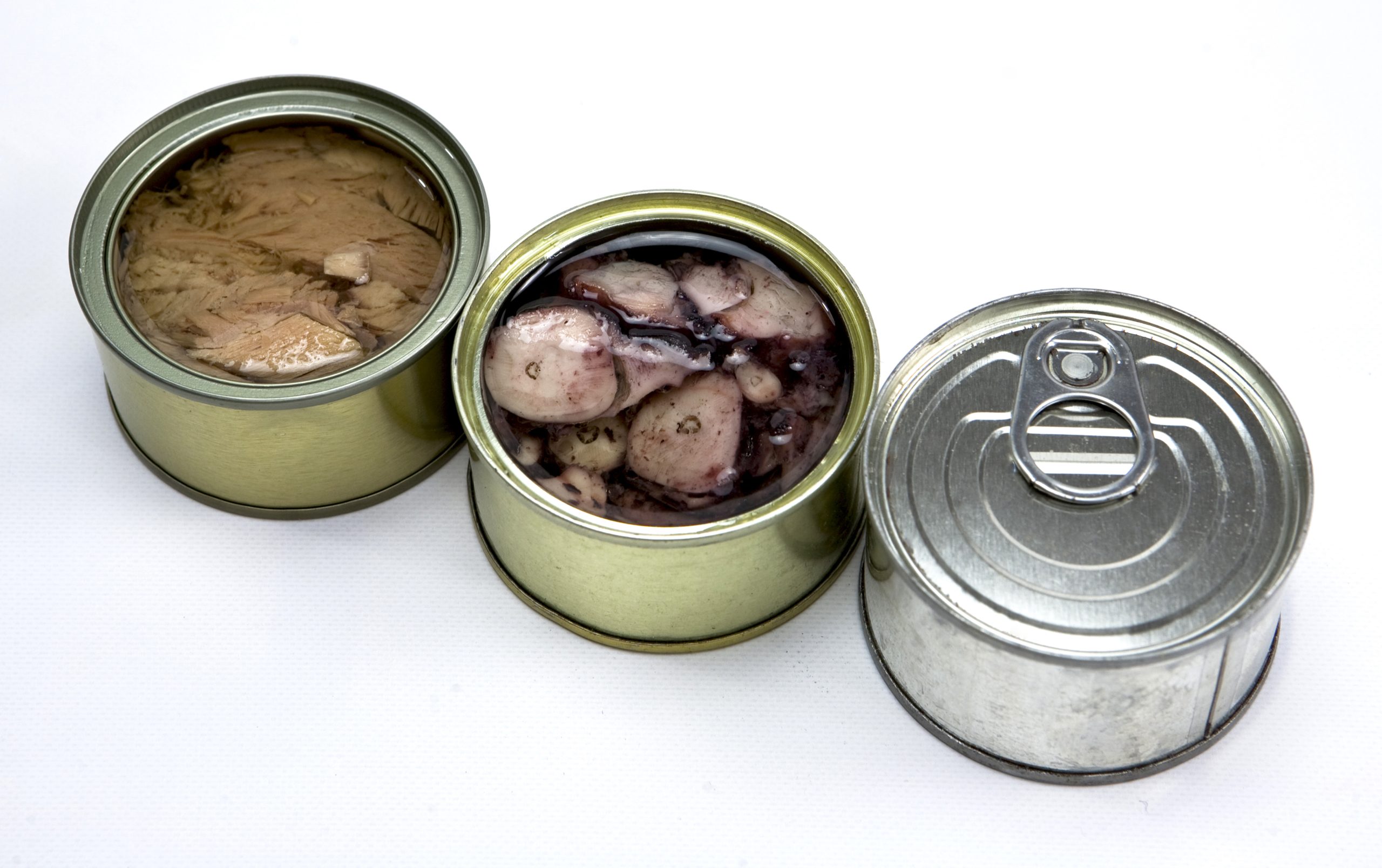Did you know that canned fish can last for several years? It’s true! Canned fish is known for its impressive shelf life, making it a convenient and versatile option for your pantry. However, you may be wondering exactly how long you can safely consume canned fish before it starts to go bad. Well, in this article, we will not only reveal the answer to this question but also provide you with important information on proper storage, signs of spoilage, and the importance of discarding spoiled cans. So, if you want to make sure that your canned fish is always at its best quality, keep reading to discover all the essential details.
Shelf Life of Canned Fish
The shelf life of canned fish can vary depending on factors such as the type of fish used, the canning process, and storage conditions. To extend the shelf life of canned fish and preserve its freshness, it is important to follow certain best practices and store it under optimal conditions. Here are some canned fish storage tips:
- Keep canned fish away from light: Exposure to light can accelerate the deterioration of canned fish. Store it in a cool, dark place to maintain its quality.
- Store in a relatively cool place: High temperatures can affect the quality of canned fish. Avoid storing it in areas with high humidity or extreme temperatures.
- Protect from moisture and water: Ensure that the cans are not exposed to moisture or water, as it can lead to rust or damage and compromise the quality of the fish.
- Regularly check for rust or damage: Inspect the cans for any signs of rust or damage. If you notice any, it is best to discard them to ensure the freshness and safety of the canned fish.
Factors Affecting Shelf Life
Factors that can affect the shelf life of canned fish include the type of fish used, the canning process, and the presence of preservatives. Here are some key points to consider:
- Shelf life variability: The shelf life of canned fish can vary depending on various factors, such as the type of fish and the quality of the canning process.
- Impact of processing methods: Different processing methods, such as hot or cold canning, can have an impact on the shelf life of canned fish. The heat used during canning can affect the texture and taste of the fish.
- Effects of preservatives: Some canned fish may contain preservatives to extend their shelf life. These preservatives can help inhibit the growth of bacteria and other microorganisms that can cause spoilage.
- Temperature and storage: Proper temperature and storage conditions are crucial for maintaining the quality and extending the shelf life of canned fish. It is important to store canned fish in a cool, dry place away from direct sunlight and extreme temperatures.
Understanding these factors can help you make informed decisions about the storage and consumption of canned fish. By following proper storage guidelines and paying attention to the quality changes over time, you can ensure the safety and enjoyment of your canned fish.
Signs of Spoiled Canned Fish
To determine if your canned fish has spoiled, look for specific signs that indicate the fish is no longer safe to consume. Checking the freshness of canned fish is crucial to avoid health risks. First, inspect the can for any bulging or swelling, as this could indicate bacterial growth. Additionally, a foul odor or off-smell is a clear sign of spoiled canned fish. If the color, texture, or appearance of the fish is significantly altered, it is likely spoiled. Mold or discoloration on the can or fish is another sign of spoilage. Lastly, if the fish tastes off or has an unusual flavor, it should not be consumed. It is important to properly discard spoiled canned fish to prevent foodborne illnesses. Consuming spoiled canned fish can lead to symptoms like nausea, vomiting, and diarrhea. So, trust your senses and follow food safety guidelines to ensure the freshness and safety of your canned fish. If you have spoiled canned fish, consider alternative recipes such as tuna burgers, tuna fried rice, tuna pasta, or tuna mayo onigiri to make the most out of your canned fish.
Importance of Properly Discarding Spoiled Fish
When it comes to spoiled canned fish, it is imperative that you properly discard it to prevent the risk of foodborne illnesses and ensure the safety of other food items. Here’s why it’s important to follow proper disposal practices for spoiled fish:
- Risks of consuming spoiled fish: Consuming spoiled canned fish can lead to foodborne illnesses. Bacterial contamination in spoiled fish can cause symptoms like nausea, vomiting, and diarrhea. These illnesses can be severe and even life-threatening.
- Foodborne illnesses from canned fish: Canned fish that has gone bad may contain harmful bacteria like Clostridium botulinum, which can produce toxins that cause botulism. This is a serious illness that affects the nervous system and can lead to paralysis or even death.
- Consequences of not discarding spoiled fish: If you don’t properly discard spoiled canned fish, you risk cross-contaminating other food items in your pantry or refrigerator. This can result in the spread of bacteria and foodborne illnesses.
- Proper disposal of spoiled fish: To safely dispose of spoiled canned fish, follow these guidelines:
- Seal the can in a plastic bag to prevent leakage.
- Place the bagged fish in a secure trash container.
- If possible, mark the container as “spoiled fish” to alert others.
- Wash your hands thoroughly after handling the spoiled fish.
Miscellaneous Information About Canned Fish
Canned fish, despite any changes in color or texture, remains safe to consume and retains its nutritional value. When it comes to canned fish, there are a few miscellaneous points to keep in mind. First, canned fish can be used in a variety of recipes, such as tuna burgers, tuna fried rice, tuna pasta, and tuna mayo onigiri. These recipes add flavor and variety to your meals. Second, freezing canned fish is not recommended, as it can affect the taste and texture. It is best to eat canned fish fresh from the can. Third, once you’ve opened a can of fish, it is important to transfer any remaining fish to a covered, airtight container before refrigerating. This helps maintain freshness and prevent food safety issues. Fourth, avoid stacking heavy items on top of cans, as this can cause dents or punctures that may lead to leaks and contamination. Finally, it is crucial to identify rotten fish. Signs of spoiled canned fish include a damaged can, popping sound while opening, change in color, and acrid smell. By following these tips, you can safely enjoy canned fish in your meals.
Storing Conditions
Proper storage conditions are essential to maintain the quality and longevity of canned fish. Here are some tips to help you maximize the shelf life of your canned fish and prevent spoilage:
- Store in a cool place: Canned fish should be kept in a relatively cool place, away from direct sunlight and extreme temperature fluctuations. Heat sources like stoves and ovens can accelerate spoilage, so it’s best to store them in a cabinet or pantry instead.
- Avoid high humidity: Canned fish should not be stored in areas with high humidity, as moisture can compromise the integrity of the cans and lead to spoilage. Ensure that the cans are not exposed to moisture or water.
- Regularly check for damage: It’s important to regularly check for rust or damage to the cans. Damaged cans should be discarded, as they may compromise the quality and safety of the fish.
- Handle with care: Proper handling of canned fish is crucial. Avoid stacking heavy items on top of cans, as this can cause dents or punctures that may lead to leaks and contamination. Store cans separately or in sturdy containers to prevent damage.
Expiration Dates
To ensure the quality and freshness of your canned fish, it is important to understand the significance of expiration dates. While canned fish can last for years, it is recommended to consume it within a certain timeframe for optimal quality. The table below provides information on the impact of storage conditions and best practices for storing canned fish:
| Expiration Dates | Shelf Life Extension | Quality Deterioration |
|---|---|---|
| Can last for years | Proper storage conditions can extend shelf life | May experience changes in color, texture, and flavor |
| Consume within recommended timeframe | Store away from extreme temperatures | Fish may become mushy or develop an unpleasant taste |
| Use the first in, first out rule | Keep cans away from light | Can may become damaged or bulging |
| Replace older cans with new ones | Avoid storing in high humidity areas | Foul odor or off-smell indicates spoilage |
| Regularly check for rust or damage | Store in a cool place | Mold or discoloration on can or fish signifies spoilage |
Safety Precautions for Consuming Canned Fish
When consuming canned fish, it is important to take safety precautions to ensure your well-being and enjoyment of the product. Here are some safety tips to keep in mind:
- Storing opened cans: After opening a can of fish, it is not recommended to store it in the fridge. The metal from the can may react with the fish, causing off-flavors. Transfer the remaining fish to a covered, airtight container before refrigerating to maintain freshness and prevent health risks or concerns.
- Freezing canned fish: Freezing canned fish is not recommended as it can affect the taste and texture. It is best to eat canned fish fresh from the can. If you want to freeze fish, opt for filets or raw fish instead.
- Stacking heavy items: Avoid stacking heavy objects on top of canned fish. This can cause dents or punctures in the cans, leading to leaks and contamination. Store cans separately or in sturdy containers to prevent damage.
- Checking canned fish: Before consuming canned fish, check the expiration date and condition of the fish. Signs of spoiled canned fish include a damaged can, a popping sound when opening, a change in color, and an acrid smell. If you notice any of these signs, it is best to discard the fish.


